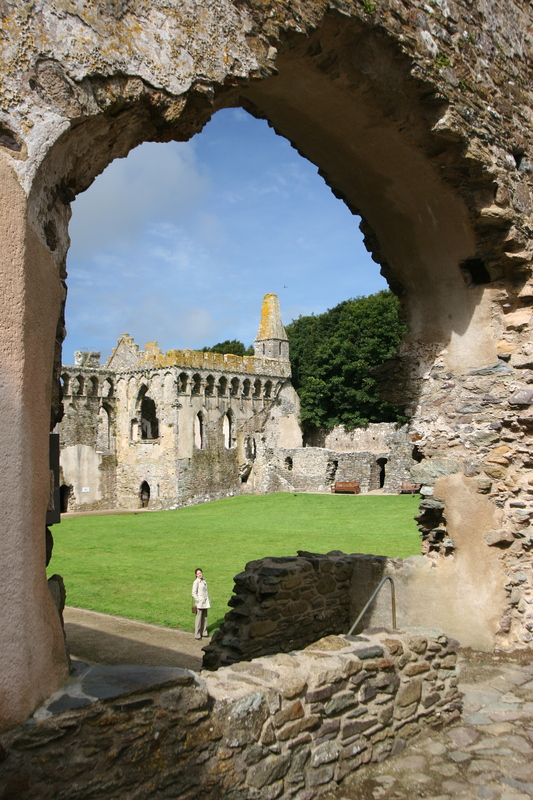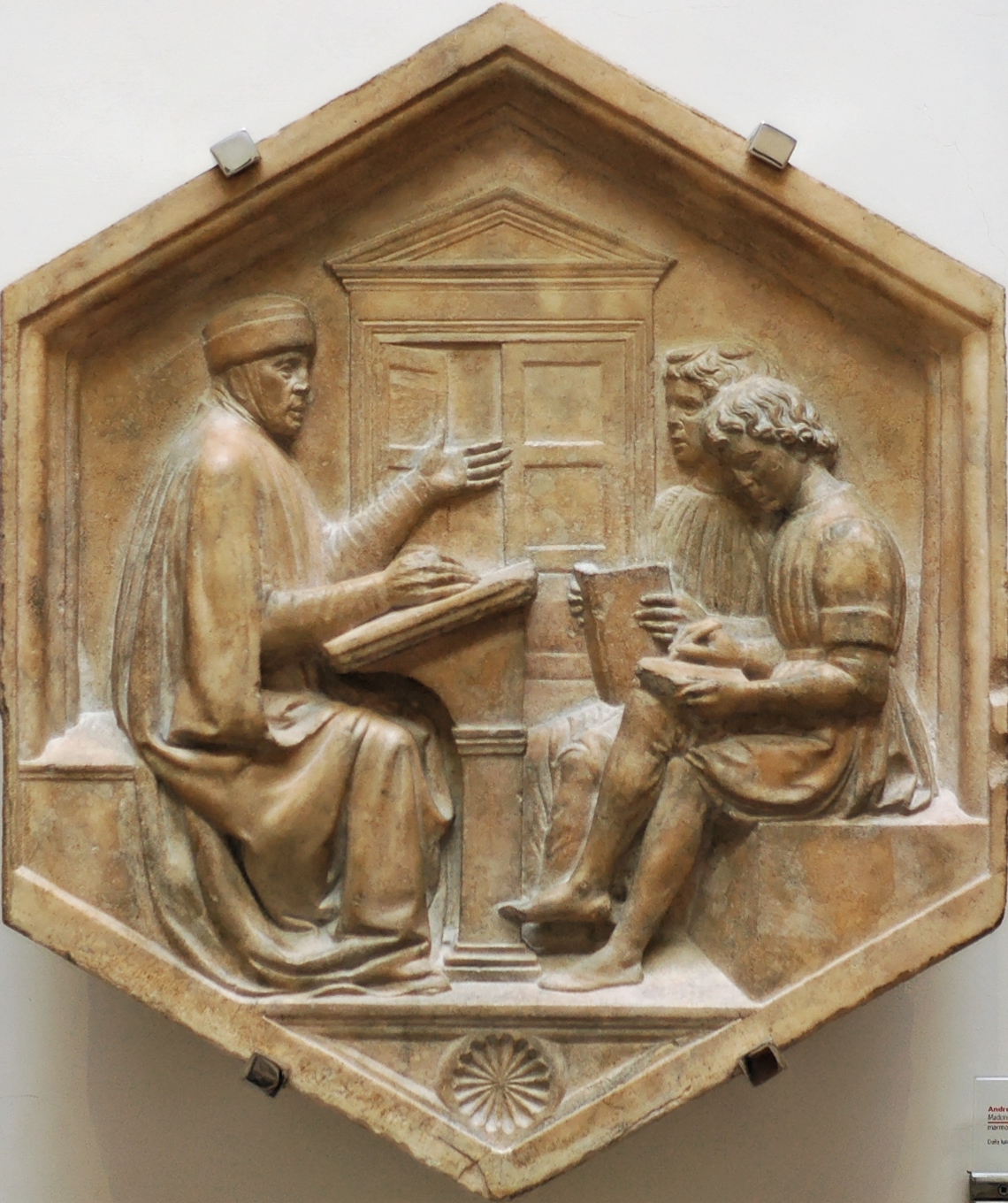|
Geraldus Cambrensis
Gerald of Wales ( la, Giraldus Cambrensis; cy, Gerallt Gymro; french: Gerald de Barri; ) was a Cambro-Norman priest and English historians in the Middle Ages, historian. As a royal clerk to the king and two archbishops, he travelled widely and wrote extensively. He studied and taught in France and visited Rome several times, meeting the Pope. He was nominated for several bishoprics but turned them down in the hope of becoming Bishop of St Davids, but was unsuccessful despite considerable support. His final post was as Archdeacon of Brecon, from which he retired to academic study for the remainder of his life. Much of his writing survives. Life Early life Born at Manorbier Castle in Pembrokeshire, Wales, Gerald was of mixed Normans, Norman and Welsh people, Welsh descent. Gerald was the youngest son of William Fitz Odo de Barry (or Barri), the common ancestor of the De Barry family of Ireland, a retainer of Arnulf de Montgomery and Gerald de Windsor, and one of the most powerfu ... [...More Info...] [...Related Items...] OR: [Wikipedia] [Google] [Baidu] |
St Davids Cathedral
St Davids Cathedral ( cy, Eglwys Gadeiriol Tyddewi) is situated in St DavidsBritain's smallest city in the county of Pembrokeshire, near the most westerly point of Wales. Early history The monastic community was founded by Saint David, Abbot of Menevia, who died in 589. Between 645 and 1097, the community was attacked many times by raiders, including the Vikings; however it was of such note as both a religious and an intellectual centre that King Alfred summoned help from the monastic community at St Davids in rebuilding the intellectual life of the Kingdom of Wessex. Many of the bishops were murdered by raiders and marauders, including Bishop Moregenau in 999 and Bishop Abraham in 1080. The stone that marked his grave, known as the "Abraham Stone", is intricately carved with early Celtic symbols and is now on permanent display within the Cathedral Exhibition at Porth-y-Tŵr. In 1081, William the Conqueror visited St Davids to pray, and thus recognised it as a holy and resp ... [...More Info...] [...Related Items...] OR: [Wikipedia] [Google] [Baidu] |
Arnulf De Montgomery
Arnulf de Montgomery (born 1066; died 1118/1122) was an Anglo-Norman magnate. He was a younger son of Roger de Montgomery and Mabel de Bellême. Arnulf's father was a leading magnate in Normandy and England, and played an active part in the Anglo-Norman invasion of Wales in the late eleventh century. Following the Montgomerys' successes against the Welsh, Arnulf established himself at Pembroke, where an earth and timber castle was erected, and was probably rewarded with the title Earl of Pembroke. At the turn of the twelfth century Arnulf reached height, with his lordship including much of the former Welsh Kingdom of Deheubarth as well as various lands in Yorkshire. Not long after reaching this apex of his career, Arnulf assisted his eldest surviving brother, Robert de Bellême, in a rebellion against Henry I, King of England. It was also about this time that Arnulf married a daughter of Muirchertach Ua Briain, King of Munster, in what appears to have been an effort to gain mil ... [...More Info...] [...Related Items...] OR: [Wikipedia] [Google] [Baidu] |
Richard Of Dover
Richard (died 1184) was a medieval Benedictine monk and Archbishop of Canterbury. Employed by Thomas Becket immediately before Becket's death, Richard arranged for Becket to be buried in Canterbury Cathedral and eventually succeeded Becket at Canterbury in a contentious election. Much of Richard's time as archbishop was spent in a dispute with Roger de Pont L'Evêque, the Archbishop of York over the primacy of England, and with St Augustine's Abbey in Canterbury over the archbishop's jurisdiction over the abbey. Richard had better relations with King Henry II of England than Becket had, and was employed by the king on diplomatic affairs. Richard also had the trust of the papacy, and served as a judge for the papacy. Several of his questions to Pope Alexander III were collected into the ''Decretals'', a collection of ecclesiastical laws, and his patronage of canon lawyers did much to advance the study of canon law in England. Early life Richard was born in Normandy and became a ... [...More Info...] [...Related Items...] OR: [Wikipedia] [Google] [Baidu] |
Trivium
The trivium is the lower division of the seven liberal arts and comprises grammar, logic, and rhetoric. The trivium is implicit in ''De nuptiis Philologiae et Mercurii'' ("On the Marriage of Philology and Mercury") by Martianus Capella, but the term was not used until the Carolingian Renaissance, when it was coined in imitation of the earlier quadrivium. Grammar, logic, and rhetoric were essential to a classical education, as explained in Plato's dialogues. The three subjects together were denoted by the word ''trivium'' during the Middle Ages, but the tradition of first learning those three subjects was established in ancient Greece. Contemporary iterations have taken various forms, including those found in certain British and American universities (some being part of the Classical education movement) and at the independent Oundle School in the United Kingdom. Etymology Etymologically, the Latin word trivium means "the place where three roads meet" (tri + via); hence, the subje ... [...More Info...] [...Related Items...] OR: [Wikipedia] [Google] [Baidu] |
Gloucester
Gloucester ( ) is a cathedral city and the county town of Gloucestershire in the South West of England. Gloucester lies on the River Severn, between the Cotswolds to the east and the Forest of Dean to the west, east of Monmouth and east of the border with Wales. Including suburban areas, Gloucester has a population of around 132,000. It is a port, linked via the Gloucester and Sharpness Canal to the Severn Estuary. Gloucester was founded by the Romans and became an important city and '' colony'' in AD 97 under Emperor Nerva as '' Colonia Glevum Nervensis''. It was granted its first charter in 1155 by Henry II. In 1216, Henry III, aged only nine years, was crowned with a gilded iron ring in the Chapter House of Gloucester Cathedral. Gloucester's significance in the Middle Ages is underlined by the fact that it had a number of monastic establishments, including: St Peter's Abbey founded in 679 (later Gloucester Cathedral), the nearby St Oswald's Priory, Glo ... [...More Info...] [...Related Items...] OR: [Wikipedia] [Google] [Baidu] |
Rhys Ap Gruffydd
Rhys ap Gruffydd, commonly known as The Lord Rhys, in Welsh ''Yr Arglwydd Rhys'' (c. 1132 – 28 April 1197) was the ruler of the Welsh kingdom of Deheubarth in south Wales from 1155 to 1197 and native Prince of Wales. It was believed that he usually used the title "Proprietary Prince of Deheubarth" or "Prince of South Wales"; however, two documents have been discovered in which he uses the title "Prince of Wales" or "Prince of the Welsh".In a charter concerning a grant to Chertsey Abbey he used ''princeps Wall e' while in another charter dated 1184 concerning Strata Florida Abbey he used ''Walliar mprinceps''. See Pryce (2005) pp. 96–97, 168–169, 171–174. Rhys was one of the most successful and powerful Welsh leaders of the Middle Ages, and after the death of the king of Gwynedd, Owain Gwynedd in 1170, he was the dominant power in Wales. Rhys's grandfather, Rhys ap Tewdwr, was king of Deheubarth, and was killed at Brecon in 1093 by Bernard de Neufmarché. Following his ... [...More Info...] [...Related Items...] OR: [Wikipedia] [Google] [Baidu] |
Gruffydd Ap Rhys
Gruffydd ap Rhys (c. 1090 – 1137) was Prince of Deheubarth, in Wales. His sister was the Princess Nest ferch Rhys. He was the father of Rhys ap Gruffydd, known as 'The Lord Rhys', who was one of the most successful rulers of Deheubarth during this period. Family Issue prior to marriage to Gwenllian: * Anarawd (murdered in 1143). He had a son, Einion, who was murdered in his bed in 1163 * Cadell (died 1175) Second he married Gwenllian ferch Gruffydd and by her he had issue:Cadw (Llywodraeth Cymru Welsh Government), April 2019. Retrieved 14 August 2020, from https://cadw.gov.wales/sites/default/files/2019-04/20140916gwenlliancardsen.pdf. * Morgan (born c. 1116) * Maelgwyn (born c. 1119) * Gwladus (born between 1120 and 1130) * Nest (born between 1120 and 1130) * Owain ap Gruffydd (born c. 1126) * Maredudd (born c. 1130/1, died 1155) * Rhys (born c. 1132) * Sion ap Gruffydd (born c. 1134) Early life Gruffydd was born in Llandeilo. Following the death of his father ... [...More Info...] [...Related Items...] OR: [Wikipedia] [Google] [Baidu] |



_drawn_and_engraved_under_the_direction_of_Edward_Wedlake_Brayley.jpg)